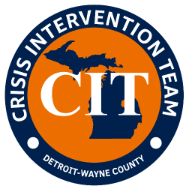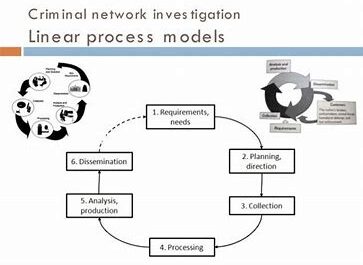Introduction

In recent years, the criminal justice system has come under increasing scrutiny for its inequities, inefficiencies, and failures to adequately serve both victims and perpetrators of crime. As society evolves, so too must its approach to justice. This essay explores a range of proposed reforms aimed at addressing these issues and advancing a fairer, more effective criminal justice system.
Sentencing Reform
One area ripe for reform is sentencing practices. Mandatory minimum sentences and three-strikes laws have contributed to mass incarceration, disproportionately affecting communities of color and perpetuating cycles of poverty and crime. Reform efforts should focus on implementing evidence-based sentencing practices that prioritize rehabilitation and reduce reliance on incarceration.
Bail Reform

The cash bail system often criminalizes poverty, as individuals unable to afford bail languish in jail awaiting trial, sometimes for minor offenses. Bail reform seeks to address this injustice by implementing alternative pretrial release mechanisms, such as risk assessments and supervised release programs, that prioritize public safety while ensuring individuals are not detained solely because of their inability to pay.
Police Accountability
Instances of police brutality and misconduct have eroded trust between law enforcement agencies and the communities they serve. Reforms in this area include enhanced civilian oversight, body cameras for all officers, and comprehensive training on de-escalation techniques and implicit bias. Holding officers accountable for their actions is essential to rebuilding trust and ensuring justice for victims of police violence.
Racial Justice
The criminal justice system disproportionately targets and penalizes people of color. Racial justice reforms must address systemic racism at every stage of the criminal justice process, from policing and arrest practices to sentencing and parole decisions. Implementing anti-racist policies and initiatives, such as diversifying law enforcement agencies and investing in community-based alternatives to incarceration, are crucial steps toward achieving racial equity in the justice system.
Rehabilitation and Reentry

Too often, individuals released from prison face insurmountable barriers to successful reintegration into society, leading to high rates of recidivism. Rehabilitation and reentry programs, including job training, education, and mental health services, are essential to breaking this cycle of incarceration. By providing returning citizens with the support they need to rebuild their lives, we can reduce crime and strengthen communities.
Juvenile Justice
The punitive approach to juvenile justice has proven ineffective at rehabilitating young offenders and addressing the underlying causes of their behavior. Reforms should prioritize diversion programs, restorative justice practices, and community-based interventions that aim to address the root causes of juvenile delinquency and provide young people with the resources they need to succeed.
Legal Representation
Access to quality legal representation is a fundamental aspect of a fair and just criminal justice system. Reform efforts should focus on ensuring that all individuals, regardless of income, have access to competent counsel at every stage of the legal process. This may involve expanding public defender services, implementing reforms to indigent defense systems, and providing funding for holistic defense approaches that address clients’ comprehensive needs.
Decriminalization of Nonviolent Offenses
The criminalization of nonviolent offenses such as drug possession and low-level property crimes has contributed to overburdened courts, overcrowded prisons, and racial disparities in the justice system. Decriminalization efforts seek to redirect resources away from punitive approaches toward public health interventions and community-based solutions. By treating addiction and mental illness as public health issues rather than criminal offenses, we can reduce harm and promote healing.
Restorative Justice
Restorative justice emphasizes repairing the harm caused by crime through dialogue, mediation, and reconciliation between victims, offenders, and the community. This approach focuses on accountability, healing, and restoring relationships rather than solely on punishment. Restorative justice programs offer victims the opportunity to voice their experiences, offenders the chance to take responsibility for their actions, and communities the opportunity to address the underlying issues that contribute to crime.
Data-Driven Policies
Implementing data-driven policies and practices can help identify areas of inefficiency and inequality within the criminal justice system. By collecting and analyzing data on arrests, convictions, sentencing outcomes, and recidivism rates, policymakers can better understand the impact of their decisions and tailor reforms to address disparities and improve outcomes. Additionally, data transparency can foster accountability and trust by allowing the public to assess the effectiveness and fairness of the criminal justice system.
Diversion Programs
Diversion programs offer an alternative to traditional prosecution and incarceration for individuals accused of low-level offenses or struggling with mental health or substance abuse issues. These programs aim to address the underlying causes of criminal behavior and reduce recidivism by providing access to treatment, counseling, and support services. Diversion programs may include drug courts, mental health courts, and restorative justice initiatives, offering individuals a chance to avoid the lifelong consequences of a criminal conviction while receiving the help they need to rebuild their lives.
Community Policing
Community policing seeks to build trust and collaboration between law enforcement agencies and the communities they serve by emphasizing problem-solving, community engagement, and partnership-building. Officers work closely with community members to address local concerns, develop crime prevention strategies, and build positive relationships. Community policing initiatives may include neighborhood patrols, community meetings, and collaborative projects with local organizations, empowering communities to play an active role in promoting safety and reducing crime.
Eliminating Cash Bail
Critics argue that the cash bail system unfairly penalizes low-income individuals by detaining them pretrial solely because they cannot afford bail. Eliminating cash bail and implementing alternative pretrial release mechanisms, such as risk assessments and supervised release programs, can promote fairness and equity in the justice system. Jurisdictions that have abolished cash bail have seen reductions in pretrial detention rates, disparities based on socioeconomic status, and unnecessary incarceration, while maintaining public safety.
Reimagining Public Safety
Reimagining public safety involves shifting resources away from traditional law enforcement approaches toward community-based solutions that address the root causes of crime, such as poverty, homelessness, and lack of access to mental health and substance abuse treatment. This holistic approach prioritizes investments in education, affordable housing, healthcare, and social services, recognizing that true public safety requires addressing social and economic inequality. By addressing the underlying drivers of crime, communities can create safer, healthier environments for all residents.
Second Chance Initiatives
Second chance initiatives aim to provide individuals with a criminal record the opportunity to rebuild their lives and reintegrate into society after serving their sentence. These initiatives may include expungement or sealing of criminal records, job training and placement programs, housing assistance, and support services. By removing barriers to employment, housing, and education, second chance initiatives reduce recidivism, promote economic stability, and ensure that individuals have the opportunity to fully participate in society upon release from incarceration.
Conclusion

Criminal justice reform is a complex and multifaceted endeavor that requires a comprehensive approach addressing systemic issues across various stages of the justice system. By prioritizing fairness, equity, and accountability and embracing evidence-based practices and community-driven solutions, we can create a criminal justice system that promotes safety, rehabilitation, and justice for all individuals and communities
Criminal justice reform is a multifaceted endeavor that requires collaboration and commitment from policymakers, law enforcement agencies, community organizations, and individuals alike. By implementing the reforms outlined above and prioritizing principles of fairness, equity, and compassion, we can create a criminal justice system that serves all members of society, promotes rehabilitation and redemption, and upholds the values of justice and accountability.



